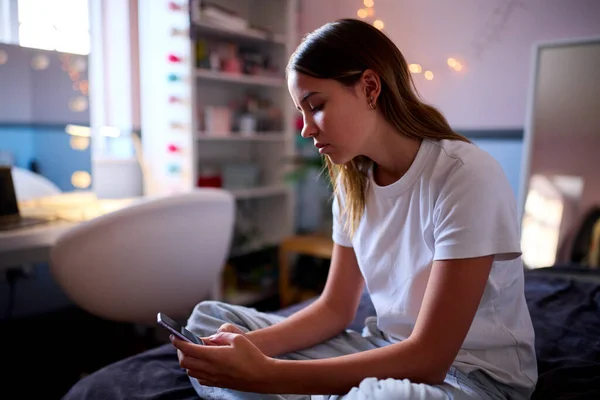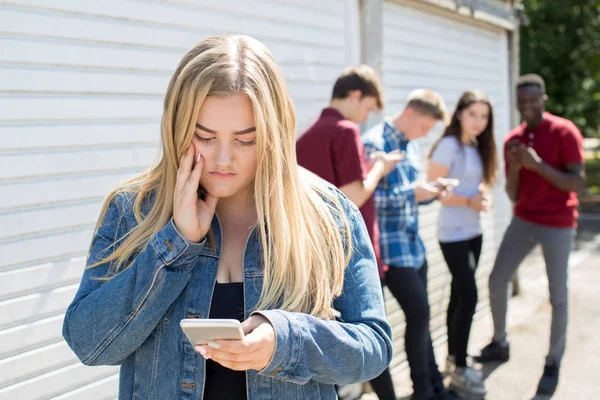The impact of social media on teens’ mental health – Let’s face it, teenagers and social media are practically inseparable. It’s our go-to for staying connected, sharing updates, and, let’s be honest, indulging in the occasional meme marathon. But with all the fun and connection, there’s been a growing murmur about a potential downside: the link between social media use and depressive symptoms among teens.
It’s not just a hunch, either. Research has been digging into this complex relationship, and while the picture isn’t entirely black and white, some interesting patterns are emerging. So, buckle up, fellow social media enthusiasts, because we’re about to dive into the world of likes, shares, and maybe, just maybe, a little bit of introspection.

The Double-Edged Scroll: Connecting and Comparing
Remember that awkward phase where fitting in felt like the ultimate goal? Social media can be a double-edged sword in this department. On one hand, it’s a fantastic platform to connect with friends, build communities around shared interests, and even find your tribe. Remember that time you bonded over a niche anime you thought only you loved? Social media magic, right?
But here’s the flip side: the curated highlight reels. We all know the feeling of scrolling through perfectly filtered feeds, meticulously crafted to showcase the best, most picture-perfect versions of people’s lives. It’s easy to fall into the comparison trap, wondering why our lives don’t look as effortlessly cool and put-together. It’s like comparing your messy bedroom to a magazine spread, and let’s be honest, it’s not exactly a recipe for boosted self-esteem.
The FOMO Frenzy: Fear of Missing Out and the Downward Spiral
Then there’s the FOMO, the ever-present fear of missing out. Every notification pings, every story update feels like an invitation to a party you weren’t invited to. It’s a constant pressure to be “in the know,” to keep up with the seemingly endless stream of social events and online trends. And when you’re feeling down, that FOMO can morph into a monster, amplifying feelings of isolation and inadequacy.
Remember that time you opted for a cozy night in instead of a crowded party? Social media might make you feel like you missed out on the experience of the century, even if, in reality, you were perfectly content with your PJs and a good book. This constant pressure to be “on” and engaged can be mentally draining, especially for teens already navigating the rollercoaster of emotions that comes with adolescence.
Beyond the Likes: Understanding the Potential Link to Depression
So, what’s the verdict? Does social media cause depression? The answer, like most things in life, isn’t a simple yes or no. Research suggests a complex interplay between social media use and depressive symptoms. Studies have shown that:
- Increased social media use is associated with higher rates of reported depression. This doesn’t necessarily mean one causes the other, but it does raise an eyebrow.
- Passive scrolling and comparison might contribute to feelings of inadequacy and low self-esteem, which are known risk factors for depression.
- Cyberbullying and social exclusion on social media platforms can be particularly damaging for teens, leading to feelings of isolation and loneliness.
It’s important to remember that correlation doesn’t equal causation. Just because two things are linked doesn’t mean one causes the other. There could be other factors at play, like underlying mental health conditions or personal vulnerabilities, that make some teens more susceptible to the potential downsides of social media.
Finding the Balance: Scrolling Smart, Not Sad
So, what can we do? Deleting all our social media accounts and living in a tech-free bubble might seem tempting, but it’s not exactly realistic (or maybe even desirable!). The key is finding a healthy balance and making conscious choices about how we engage with these platforms. Here are some tips:
- Be mindful of your time: Set limits on how much time you spend on social media each day. Remember, there’s a whole world out there waiting to be explored beyond the screen!
- Curate your feed: Follow accounts that inspire you, uplift you, and make you feel good. Avoid negativity and comparison traps.
- Focus on real-life connections: Prioritize spending time with friends and family in person. Face-to-face interaction is irreplaceable for building meaningful relationships and boosting your mood.
- Be present in the moment: Put your phone away when you’re having a conversation, enjoying a meal, or simply soaking in the beauty of the real world around you.
- Seek help if needed: If you’re struggling with depression or feeling overwhelmed by social media, don’t hesitate to reach out for help.
Talk it Out, Don’t Scroll it Out: Building Support and Resilience
Talking about mental health, especially as a teenager, can feel daunting. But remember, you’re not alone. Depression is a common issue, and seeking help is a sign of strength, not weakness. Here are some ways to build support and resilience:

- Confide in someone you trust: Talk to a friend, family member, counselor, or therapist. Sharing your struggles can be a huge weight off your shoulders, and receiving understanding and support can make a world of difference.
- Challenge negative thoughts: Social media can be a breeding ground for negative self-talk. When you catch yourself comparing or criticizing yourself, try to challenge those thoughts with positive affirmations and realistic self-compassion.
- Focus on self-care: Prioritize activities that make you feel good and nurture your mental and physical well-being. Exercise, spend time in nature, practice mindfulness, or pursue hobbies you enjoy. Taking care of yourself is essential for building resilience against any challenges, including the potential downsides of social media.
- Embrace the offline world: Disconnect from technology regularly and engage in activities that don’t involve screens. Read a book, go for a walk, take up a new hobby, or simply enjoy the silence. Reconnecting with the real world can be incredibly grounding and refreshing.
- Remember, you’re in control: You have the power to choose how you interact with social media. Don’t feel obligated to be constantly connected or pressured to portray a perfect online persona. Take control of your feed, your time, and your mental well-being.
Remember, social media is just one aspect of your life. Don’t let it define you or dictate your happiness. Focus on building strong relationships, nurturing your passions, and prioritizing your mental health. By striking a healthy balance and seeking support when needed, you can navigate the world of social media without getting caught in the downward scroll.
Beyond Individual Action: Promoting Positive Change
While individual choices are crucial, promoting positive change also requires broader efforts. Here are some ways we can create a healthier online environment and support teenagers dealing with the potential downsides of social media:
- Social media platforms: Companies should prioritize user well-being, implementing features that encourage mindful use, combat cyberbullying, and promote positive content.
- Schools and communities: Educational programs can teach teens about responsible online behavior, critical thinking skills to navigate the digital world, and the importance of mental health awareness.
- Open conversations: Encouraging open and honest conversations about mental health, especially among teenagers, can break down stigma and empower individuals to seek help.
By working together, we can create a more supportive and understanding online environment, empowering teenagers to navigate the world of social media with confidence and resilience. Remember, the scroll doesn’t have to be a source of blues. With mindful choices, supportive communities, and a focus on mental well-being, we can turn the tide and make social media a force for good, connection, and even a little bit of joy.
Key Findings
The sample size for the present study was 4,428 boys and 7,607 girls (12,035 adolescents) aged 10-19 in Wave 1 and 4,428 adolescent boys and 11,864 adolescent girls (16,292 adolescents) aged 13–23 years in Wave 2.
- The study results showed that access to the internet among adolescent boys and girls increased from Wave 1 to Wave 2 (25.3% to 70.2% and 6.6% to 38.5%), which, in turn, increased their social media usage, with a significant difference between boys and girls (13.9 % to 57.6% and 3.8% to 26.6%).
- From Wave 1 to Wave 2, a higher percentage of adolescent girls experienced mild and severe depressive symptoms, whereas mild depressive symptoms increased slightly among boys than girls from Wave 1 to Wave 2 (5.9% to 7.3% vs. 12.6% to 18.4%). This vulnerability of adolescent girls is attributable to the social pressure they go through in the digital world.
- In logistic regression analysis, age emerged as a key predictor of depressive symptoms in adolescents; adolescents aged 15-19 were twice as likely to have depressive symptoms than their younger counterparts, OR=2.762.
- Education acted as a barrier to depression; thus, educated adolescents were less depressed than uneducated ones. Likewise, the wealthier adolescents were more likely to be depressed than their poorer counterparts.
Further, those engaged in paid work and substance abuse in the past year were 18% and 57% more likely to have depressive symptoms. Additionally, dropping out of school was associated with an increased likelihood of depression.
Furthermore, compared to social media non-users, frequent social media users (three or more hours daily) were more likely to be depressed.
This article is just a starting point. There’s so much more to explore in the complex relationship between social media and teen mental health. Feel free to share your own experiences, insights, and resources in the comments below. Let’s keep the conversation going and build a healthier online world together!
Read Also | How Probiotics and Prebiotics in Fermented Foods Impact Mental Health






